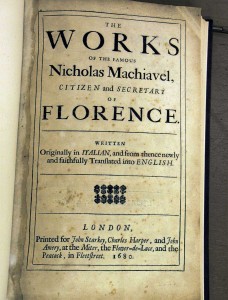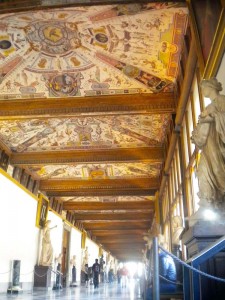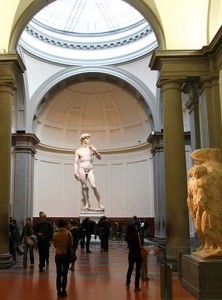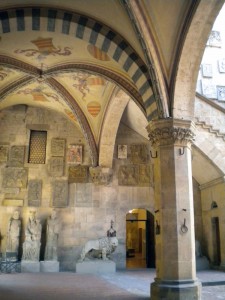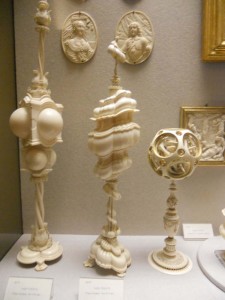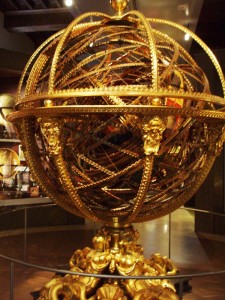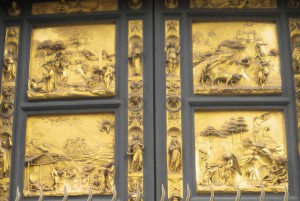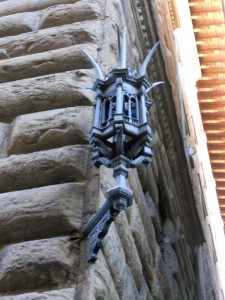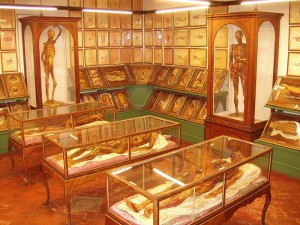Machiavelli IV: Julius II, the Warrior Pope
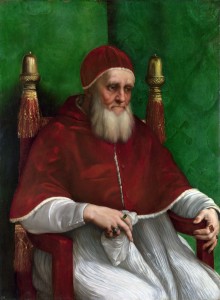
(See also Machiavelli Part I, Part I.5, Part II and Part III)
Long has he waited, the new prince who in 1503 joins Borgia and Medici in stage center of Machiavelli’s tumultuous Italy: Giuliano della Rovere (1443-1513), intelligent, experienced, educated, well-connected, versed in the new old arts of the resurrected ancients, fluent in the subtleties of theology, and politics, and war, crafty, persuasive, bellicose, power-hungry–more than power-hungry, power-starved–and patient. His is not a willing patience but that silent, vindictive patience which sets in like a sickness when spirit and ambition have been trapped in the stables waiting for the starter’s gun too long. He had been a Cardinal twenty-one years when the election of 1492 brought him within a few votes of St. Peter’s throne. He had planned so hard, spent so much, twenty-one years mapping the subtle battlefields of Rome’s Church, only to have the papal tiara snatched away by the Spanish Bull, that filthy Borgia, with his blackmail, and his bribery, the same arts della Rovere tried to use but Borgia, by a hair’s breadth, used them better. The tension of 1492 made Giuliano della Rovere and Rodrigo Borgia bitter enemies from the instant Borgia became Alexander VI, and della Rovere, scenting the monsters’ nature before most others did, wisely fled to Ostia, thence to France, beyond Alexander’s reach, to wait and plan how to ensure that the throne he had been within a few votes of grasping would, next time, be his.
Long too has the reader waited for this new installment in my Machiavelli series. I was sick for nearly three full months from mid-October to mid-January of this year (it was a nasty flare-up of a known chronic condition, exhausting but not dangerous). This blog was one of many activities which I had to postpone while I concentrated on recovery. Happily I am now recovered, and looking forward to a productive spring, during which I hope to return to my former pattern of producing a fresh post every two-to-three weeks. I am very grateful all of you for your patience, and for the many kind and encouraging comments and responses I’ve received in the meantime.
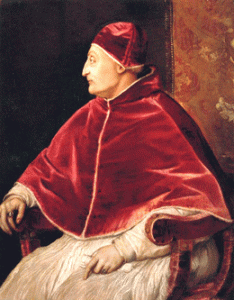
The della Rovere family rose to papal prominence in much the same way the Borgias had, through a compromise candidate. His uncle Sixtus IV (pope from 1471-1484) came from a middlingly important Italian family, and was pious and learned enough to be a well-respected cleric. He became a Franciscan, an act of uncommonly sincere piety for his class, since it was not a promising political move, and eventually became head of the order. He was probably elected largely due to his piety, since after a couple of bizarre popes, including the fiercely humanist and weirdly progressive Pius II, then the anti-humanist, anti-social, confusing (rouge-wearing!) Paul II, people wanted something safe. Given worldly power, our Franciscan decided to exercise it, and became engaged in many worldly ends of politics, including fomenting aggression against Ferrara, and encouraging the infamous Pazzi Conspiracy of 1478, which attempted to expel the Medici from Florence by trying to assassinate Lorenzo de Medici and his brother Giovanni (who was killed) by attacking them in the cathedral during mass (the pope’s involvement in the details of the plan were slim but it was still a stain). Sixtus IV also built a new chapel, called the Sistine Chapel after him, and engaged freely in nepotism, granting Cardinalships to numerous nephews from both sides of his family, including young Giuliano della Rovere, who then waited for his chance after his uncle’s death, precisely as young Rodrigo Borgia had waited after the death of his uncle Callixtus III.
After Alexander’s election, in 1492 della Rovere retreated from Borgia-controlled Rome, but did not sit quietly. He had spent time at the French court before, and had many friends and the ear of the king. In France he made himself useful to as many powerful men as possible, and used his knowledge and mastery of statecraft to secure support, and weaken Borgia attempts to court the French king. In 1494 he was one of the voices who persuaded the king to take advantage of Alexander VI’s squabble with Naples to invade Italy, and Cardinal della Rovere personally rode with the invading forces as they crossed the Alps and carved their bloody path south through his homeland, seizing Milan, threatening Florence, and forever transforming the face of northern Italy. As Cesare Borgia’s attempts to carve out a kingdom, and strife between Naples and France, turned Italy increasingly into a battlefield, della Rovere was clever enough to foment Italian hatred of the Spanish Borgias, drawing allies who saw him as the safely Italian alternative, despite his involvement in the far more direct French invasion. But della Rovere was not powerful enough to counter so savvy and ruthless an adversary as Cesare. The younger cardinal acquired ally after ally, including Florence and Ferrara, and in the end Borgia attempts to woo France were too powerful for even della Rovere to convince the French king that the enemy of his friend should be his enemy. France allied with Cesare, offered him a half-Spanish French princess and a French ducal title, and assurances of support so long as he upheld French interests in Italy.
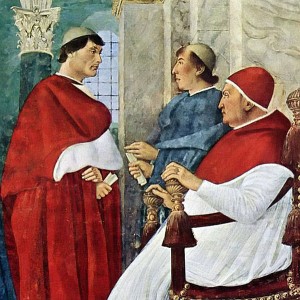
On August 6th, 1503, pope Alexander and Cesare Borgia dined in their fortress at Castel san Angelo with Cardinal Adriano da Corneto. Both became terribly sick. Alexander died. Cesare recovered, but slowly, after weeks of weakness and horrible suffering (one account describes his skin peeling off, though likely due to attempts to treat the illness rather than the illness itself). Anyone who could possibly be accused of poisoning has been blamed, including both Cesare and Alexander, who had been uncomfortable partners since well before Giovanni’s death. It may well just have been food poisoning in a pre-refrigeration world. Whatever the cause, Borgia fortunes were now at a critical moment, and the surviving Borgia prince had had little time to prepare, and was sick in bed, unable to lead troops or conduct negotiations. He sent troops to loot the palace before the mob did, and it is unclear in the ensuing chaos what treasures were carried off by whom, but by the time it was done Alexander’s corpse is supposed to have been found alone, wrapped in a carpet, in a room from which every stick of furniture and scrap of clothing had been looted. The body was displayed on the steps of the palace, a swollen, purple and black, stinking mass with its tongue sticking out that witnesses describe as the most vile corpse they had ever seen (and Renaissance people saw a lot of corpses).
Three armies threatened the Papal Election that followed: the armies of France and Naples, en route to fight each other, both camped just outside Rome to make the College and people aware that their kings and cannons were watching and would not tolerate a hostile victory in the vote. Meanwhile Cesare’s armies were within Rome itself, and while he was too weak to take the field, he was far from too weak to command troops, and to command the eleven Spanish Cardinals who were far more Borgia pawns than anything else. The conclave was delayed to allow extra time for French Cardinals, and della Rovere, to arrive and participate.
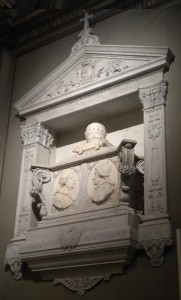
Cesare had renounced his Cardinal’s hat in order to become a Duke and marry and pass on the Borgia bloodline. There was no rule that the pope had to be a Cardinal, or even a cleric, and if Borgia forces had been at their peak it is possible Cesare might have pushed to be elected himself. As it was he did not have the speed or power, so needed to compromise, and bide his time if he wanted to someday be pope. But who to ally with?
France was determined to have a French pope, and worked hard to advance Georges d’Amboise as their candidate. The French planned carefully. Most Italians would never tolerate a French pope, remembering with dread the days of the Avignon Papacy, so Cesare’s contingent of Spanish cardinals was a perfect asset. France promised to continue to support Cesare and recognize him as master of all his father had granted him if he would give his eleven votes to d’Amboise. That added to the French cardinals would be nearly enough. For the remainder, they could count on their good della Rovere and his cousins (whose votes he commanded), and on Ascanio Sforza, Cardinal of Milan, whom they had captured in the invasion, and released on condition that he vote for the French candidate and persuade as many allies as he could to do the same. The plan had only one flaw: it relied on trusting the Italian Cardinals.
Della Rovere refused to vote for the French candidate. If France wanted an ally on the throne, he insisted, they would need to elect him. It would be easy: he was Italian, and an enemy of the Borgia, so all the Italian cardinals would flock to him, and none would support the French without his persuasion. No amount of reminding della Rovere of the support and aid France had given him in the past made any headway. France must give him the throne, or watch it fall into hostile hands.
Ascanio Sforza, now free, broke his word to woo his fellow Italians to the French cause. He did, as a point of honor, vote for France himself, but let his capture and release make him a living argument to his fellow countrymen of the danger France posed. With him as reminder, no Italian would ever vote for France.
Even the Spaniards turned. With Cesare weak and sick and possibly about to die, Borgia stooges were looking to new powers to protect them. For them, the King of Spain was the clear option, and he did not want a French pope, even if Cesare did.
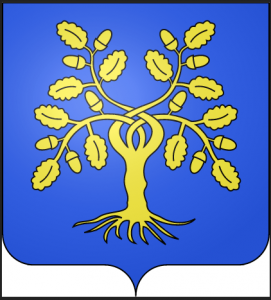
The French bloc, triply betrayed, refused to accept della Rovere’s proposal that they vote for him, and would forever after blame him for their defeat. Since neither could win, and no Spaniard could win, all powers looked for a compromise candidate, someone old and sick and inert, likely to do little and die soon, and all hoped they could regroup and gain a majority by the time of the next election. Thus Francesco Todeschini Piccolomini became Pope Pius III. Nephew of the earlier humanist firebrand Pius II, Piccolomini was from the comparatively neutral town of Sienna, enough of a cowardly Borgia stooge to be tolerable from Cesare’s perspective, and not long for this world. He reconfirmed Cesare as commander of the papal armies, postponing war and temporarily granting Cesare continued power over his dominions. His most memorable act as pope was to announce that Alexander VI would not be buried in the crypt of St. Peter’s where popes were (and are) usually laid to rest. Alexander was too wicked to be in St. Peter’s, he decided, not then, not ever.
September 22nd, Pius III is crowned. October 18th, Pius III dies. New election.
Cesare has recovered, and is still commander of the papal armies, but his forces are weakened and his position precarious He has regained command of the eleven Spanish Cardinals but has no other sure votes. France has not forgiven della Rovere, but he has worked hard to convince them that, given the general hatred of France, he is the most France-loving man likely to get on the throne. Now he courts Cesare, offering solemn promises that, if Cesare and the Spanish cardinals support him, he will maintain Cesare in his current position, leave him the papal armies, his titles, his funds, his lands, and make him a close and trusted ally. The Borgia Kingdom in central Italy will be forever secure, and della Rovere might even help Cesare into a position such that, when he is a bit older, he might succeed della Rovere as the next pope, restoring and finally solidifying the Borgia dream of turning the papacy into a hereditary monarchy. Cesare will henceforth practically be della Rovere’s adopted son, and they will rule Italy together, with the support of their mutual ally in France, and Cesare’s ties with Spain. Cesare accepts, the bargain is solemnly sealed, and a few promises to Ascanio Sforza are all it takes to secure the unanimous election of Giuliano della Rovere as Pope Julius II.
He has Cesare arrested, thrown in prison, stripped of all his titles and property, deported to Spain, and, after some intervening chaos and a brief escape, Cesare is killed.
This is an absolute shock, much, much more shocking than it sounds. The Roman Pontiff, highest prince in the world, has betrayed and destroyed a noble sovereign Duke to whom he had pledged himself as a bosom ally, and to whom he owed his throne. Cesare was Julius’ supporter and benefactor, and vice versa. This alliance was in many ways virtually adoption. We have read about a lot of broken promises and murders in the course of our Borgia stories, but this is different, utterly and unimaginably different. When enemies duel or battle each other, those violent acts are honorable. When enemies poison enemies, or send assassins after each other, that is dishonorable but still reasonably acceptable and common. When Cesare killed his own man Remirro de Orco, that was new, shocking, different. Confusing. This is the same thing but on an unimaginable scale. The innermost circle of Dante’s Hell is for people who betray their feudal benefactors. This is that again, only a pope, and also the reverse, a patron betraying a supporter he has promised to defend and treat as an ally. There is no place for this in Dante’s Hell.
There is also no place for it in the Handbook of Princes genre. The Prince has betrayed and murdered his closest supporter. No one can trust him now. Any pledge he makes is unreliable. Anyone near him is in danger. The sword he wields is arbitrary and cuts down friend and enemy. The rational man and the moral man now both come to the same conclusion: do not serve such a master. Leave him. Run. The vassals of such a lord should abandon him at once, declare the tyrant what he is, unite and take up arms and overthrow him. That is what must happen. Machiavelli, good student of politics, knows it, and all through the night when the deed is done everyone expects that in the morning Julius will rise to face an empty throne room, while the banners of his former allies mass against him.

The next morning, everyone turns up and kisses the pope’s ring and feet and politics goes on, and no one even whispers the name ‘Borgia’. It never happened. Everyone serves the traitor-pope just as before.
This is the moment that cannot be, as Machiavelli explains in The Prince and more in his letters. This is where the Handbook of Princes fails. The virtuous Prince was supposed to be better ruler because he commands the respect and loyalty of his servants, unlike the wicked prince who loses them: untrue. The virtuous Prince was supposed to enjoy the blessings of God who would make him strong, while the tyrant was unseated: untrue. The virtuous Prince was supposed to be more effective because good, wise policies have good, beneficial consequences for his people and his nation: untrue. Uncertain why the last is untrue? Look at what has just happened and what could have happened:
Outcome if Julius II had been virtuous:
Julius seals his pact with Cesare. After his election, he continues to treat Cesare as a close ally, allows him to control the papal army, and use it to continue waging war in central and northern Italy. Thousands if not tens of thousands die in combat and more from bandits and disease as the chaos continues. Cesare secures Romagna and the papal states, then turns on Florence, probably Modena and Ferrara too, on the Venetian land empire, shoring himself up more and more at the cost of chaos. In the end either the Emperor invades to check Cesare’s rise, or Cesare grows strong enough to make his bid to be Julius’ successor, and bloody civil war erupts whether Cesare wins or loses as he and the rest of Italy battle to see whether or not the papacy will indeed become a hereditary monarchy. Death toll: tens if not hundreds of thousands.
Outcome if Julius II is a treacherous deceiver:
Cesare is instantly removed. The wars in central Italy cease. The suddenness of the change makes it easy for provincial forces, as well as papal forces and city forces, to bring about some degree of stability. The shock of the suddenness of Julius’ betrayal makes everyone else wary of causing trouble. Peace is instantly restored, the Borgia Kingdom eliminated, exiles restored, Florence protected. Death toll: Cesare Borgia, plus, perhaps, a few of his guards and associates.
Conclusion: the Virtuous Prince is not more successful.
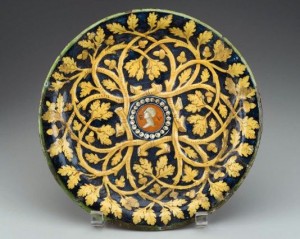
Julius instantly solved a problem no one else had been able to solve in a terrible decade. The worst days of Italy are gone. Julius’ vassals did not abandon him, nor did God smite him with skyfire. The advantages that the Virtuous Prince was supposed to have are invisible. Julius did it, not through love, but fear. Perhaps it is more useful to be feared than loved?
More is undermined here than just the Handbook of Princes genre. Ethics is a problem too. The Virtuous Pope here, the one who was loyal to Cesare, would have doomed thousands to death and Italy to chaos and conquest. Julius’ betrayal saved everyone. Yet, the Christianity and ethics of Machiavelli’s day declare that Julius has done a wicked deed, and will go to Hell for it. Going to Hell for saving thousands? This does not sound right. Is it really a morally wicked deed, Machiavelli asks, to betray and murder Cesare Borgia, and thereby prevent so much evil? Is this really what ‘good’ and ‘evil’ mean?
Thus Utilitarian Ethics was born. It is a familiar thought pattern for us, but for Machiavelli (and Europe at that point) it was a completely new idea, never thought before. What if this is good? This act that, by destroying a terrible, wicked, monster of a man, saved a hundred thousand lives? How can I call it evil? What if I want to judge the act, not by what it was (betrayal, murder), but by what it did, save Italy (and Florence!) and the world from the Borgia menace. And if Julius had done the “good” thing, and kept Cesare going, and let all that evil happen when he had the power to stop it with one dark command, could we really call that “good”? And what of virtue ethics? Why do I care whether Julius betrayed Cesare for selfish or selfless reasons–he still saved Italy, and so many, many lives. Doesn’t that matter? Doesn’t the consequence of an act, its utility, factor into the moral equation? I think, he says, it does.
This is the advice Machiavelli writes for the Medici when the forced retirement of exile gives him time to write a new Handbook of Princes for a new kind of prince: the princes of Florence, whose duty is to protect Florence–beautiful, unique, burgeoning, irreplaceable Florence–and her citizens–artists, philosophers, poets, statesmen, craftsmen–from the perils of conquest and extermination which constantly threaten her fragile walls. With France so close, one more civil war could be the end. This is not a question of selfishness or power for power’s sake, but of the very survival of the nation in their care. “In order to be virtuous, the people must still be alive,” (paraphrase). In this situation, he writes, we should study and emulate Julius Caesar, but we should also study and emulate Cesare and Julius II. If fear will discourage conspiracy, use fear. If the betrayal and exile of one dangerous faction or family will stabilize the republic, use betrayal. If breaking a treaty will give Florence the ally she needs to survive, rip up that scrap of paper. It is the prince’s duty.
This is not a good consequence erasing an evil act, it is the argument that the act itself is not evil because of its good consequence. Saving a hundred thousand lives, or Florence, is good–the means, therefore, are good, even if the means are a murder. “The end justifies the means” thus does sort-of ring true, but rather he is saying that we judge the means by its end: what Julius II willed in his heart, Machiavelli would say, wasn’t the betrayal and murder of Cesare, but was the salvation of Italy. If Julius had defended Cesare, as he promised, and let all those people die, that would have been the evil act. At times he puts it almost as if the prince here is taking on sin for the people, as if in order to guard those in their protection the sovereign volunteers to damn himself to commit the sins necessary to create an era of peace in which citizens will have the leisure to live virtuously (instead of being dragged into violence, hatred, rape and death). At other times it feels as if he is saying there is no other real scale beyond the Earthly consequence (no Hell? Do we smell atheism?). He never explicitly discusses the religious import of utilitarianism, but the mind of the reader cannot help but jump there instantly.
We now have consequentialism The can of worms is open, and in my next post I shall explore it, and its religious implications. But we have also opened another can of worms: the papacy of Julius II.
Julius II brought peace to Italy and saved thousands of lives. Then he started a new war. This is Giuliano della Rovere, referred to in his own lifetime and after as the Warrior Pope, and as “Il Papa Terribile”. This is an infinitely ambitious man made tired and bitter by thirty years of waiting, ten of them wrestling with terrible Borgia enemies. This is a pope who likes to ride in armor. His is not an ambition which ends with wealth and power. He is “Julius” and will remind the world that the pope is Emperor, successor to the Caesars. Those territories Cesare left behind, that are now vulnerable and rebuilding, he demands them, and sends armies to seize them, and when Venice or other powers try to reclaim their own, he makes war. France is still stirred up from earlier wars, and still bitter at him. Naples is stirred up, the Emperor is stirred up, England is eager for conquests, Spain is defensive about its Mediterranean holdings, the Ottomans are expanding, the Swiss are ready with their mercenaries, and Florence is still delicious. Julius stirs all these powers toward war, demanding in the name of his imperial power that Europe’s princes come in on his side to defend his right to rule Italy. It is in this phase that the powers meet at Cambrai, a despairing Machiavelli watches the balance of power so carefully, exchanges so many letters with his friends trying desperately to predict who will be at war with whom when the council ends: France & Emperor against England? France & England against Spain? Which of the nearby armies, Julius, France, Naples and Emperor, will move first against Florence? He studies, he worries, he plans, and in the end the council emerges and Julius II has persuaded every crowned head of Europe to join into a Holy League and help him attack Venice and take all the former Borgia territories and turn them into his new papal Roman Empire. This is a pope determined to wipe away the Borgia stain with blood, and make the pope a true Emperor again. This is a pope who will be remembered. He also brings more humanism to the Vatican, stocks its libraries, has his beloved Michelangelo (a complicated dynamic if ever there was one) decorate the new Sistine Chapel with neoclassical art and figures of pagan sibyls mixed among the Hebrew prophets to reinforce the fact that the ancient philosophies revived by the humanists are part of his Christianity as much as anything. But the humanism he brings is all in service of power: empire, law, Rome, Constantine, reminders of the sovereignty of Rome and Italy and the higher sovereignty of Julius. He is a pope for whom means seems to mean nothing, and ends everything. And he is incredibly effective, and remakes the papacy as no one had imagined it could be remade.
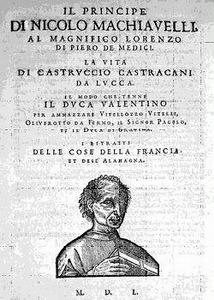 Five hundred years ago today, the 19th of February 1513, the order was given for the arrest of Niccolo Machiavelli on suspicion of participating in a conspiracy against the newly-reestablished Medici regime. The Medici had been in exile in Venice for eighteen years, consolidating their wealth and allies and gathering resources so they could retake the city Piero had abandoned during the French (Borgia-caused) invasion of 1494. In the intervening years, the Borgias had carved out their Italian kingdom, Giovanni had been murdered, Cesare had turned from a fearsome Cardinal to a more fearsome Duke and conqueror, and then the Borgia years had ended, and the family’s fall left a weak and disorganized Italy ripe for new ambitious families to carve out kingdoms; one of those best positioned to do so were the Medici. Florence herself had experienced the theocratic rule of the monk Savonarola, then the restored Republic of Soderini, of which Machiavelli was one of the central figures. When the Medici army of allies and mercenaries recaptured the city, they did not arrest Machiavelli right away. They ended the Republic and moved into the Palazzo Vecchio, but Machiavelli remained in the city, a cautious but free citizen, until a small nest of anti-Medici conspirators was uncovered. Among their documents were found a page listing the names of others they had intended to recruit but had not yet approached, including Machiavelli. It was too much. Machiavelli was arrested, interrogated, tortured (using a device a similar to the rack), and exiled. It was in that exile that his forced retirement gave him the time to write the texts which would so transform how we understand politics, ethics and history: the Discourses on Livy treating Republican government, The Prince, and the personal letters which show even more clearly than his polished books how his new political and historical theories were the direct results of his experiences of the Borgias, their rise, their fall, and the new Emperor Julius II who rose to occupy the (bloodied and stained) papal throne.
Five hundred years ago today, the 19th of February 1513, the order was given for the arrest of Niccolo Machiavelli on suspicion of participating in a conspiracy against the newly-reestablished Medici regime. The Medici had been in exile in Venice for eighteen years, consolidating their wealth and allies and gathering resources so they could retake the city Piero had abandoned during the French (Borgia-caused) invasion of 1494. In the intervening years, the Borgias had carved out their Italian kingdom, Giovanni had been murdered, Cesare had turned from a fearsome Cardinal to a more fearsome Duke and conqueror, and then the Borgia years had ended, and the family’s fall left a weak and disorganized Italy ripe for new ambitious families to carve out kingdoms; one of those best positioned to do so were the Medici. Florence herself had experienced the theocratic rule of the monk Savonarola, then the restored Republic of Soderini, of which Machiavelli was one of the central figures. When the Medici army of allies and mercenaries recaptured the city, they did not arrest Machiavelli right away. They ended the Republic and moved into the Palazzo Vecchio, but Machiavelli remained in the city, a cautious but free citizen, until a small nest of anti-Medici conspirators was uncovered. Among their documents were found a page listing the names of others they had intended to recruit but had not yet approached, including Machiavelli. It was too much. Machiavelli was arrested, interrogated, tortured (using a device a similar to the rack), and exiled. It was in that exile that his forced retirement gave him the time to write the texts which would so transform how we understand politics, ethics and history: the Discourses on Livy treating Republican government, The Prince, and the personal letters which show even more clearly than his polished books how his new political and historical theories were the direct results of his experiences of the Borgias, their rise, their fall, and the new Emperor Julius II who rose to occupy the (bloodied and stained) papal throne.
Thus, today, while Google commemorates the birth of Copernicus 40 years earlier, Florence is marking February 19th 1512 with a procession through the city, in which the crier will call for Machiavelli’s arrest in each quarter o f the city. It may seem a strangely dark day to celebrate, the imprisonment and torture of our beloved historical figure, but it is in many ways the birthday of political science, the one day which, if disrupted by some time traveler, could deprive us of the produce of that vital exile. Machiavelli could have been forgiven and hired by the Medici he wanted so desperately to work for. He could have been executed, or died in the prison, or been tortured enough to die of some infection or hemorrhage. Instead we have utilitarian ethics, a vein of thought which is so universal in the modern world that we find it almost impossible to think about what “decision-making” meant without it.
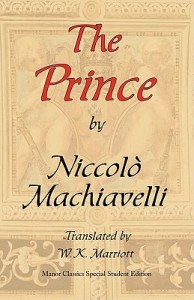 Here at last we see both central facets of why Machiavelli is important. When historians argue about “Who was the first modern philosopher,” those who argue for Machiavelli argue this: he was the first person to use consequentialist ethics, i.e. to believe that an act might be good or bad because of its consequences rather than the act itself, and the first person to practice political science, that is to use history as a set of examples to be studied and compared to rather than as a source of moral tales to be read and absorbed through virtuous osmosis. We as modern people use both these things every day, so constantly that we struggle to think without them. When deciding, what is the consequence? Even if in the end you go with a decision based on Virtue Ethics or Deontology you still think about the consequence. When looking at events, what historical ones are similar? We study history to learn from it, and not repeat mistakes, right? And when we do, we look at economics, oppression, class struggles, technological change, environment, patterns, not just the moral character of king and commander. These are indispensable elements of modern thought, which define the modern era more clearly and more universally than, for example, any technology. What is a modern person? One reasonable answer is “someone who uses consequentialism and political science.” There may be (and are) other differences, but this certainly is one, and Machiavelli is its father. Julius and the Borgias were the spark, but he was the one who was there to see and analyze, and describe.
Here at last we see both central facets of why Machiavelli is important. When historians argue about “Who was the first modern philosopher,” those who argue for Machiavelli argue this: he was the first person to use consequentialist ethics, i.e. to believe that an act might be good or bad because of its consequences rather than the act itself, and the first person to practice political science, that is to use history as a set of examples to be studied and compared to rather than as a source of moral tales to be read and absorbed through virtuous osmosis. We as modern people use both these things every day, so constantly that we struggle to think without them. When deciding, what is the consequence? Even if in the end you go with a decision based on Virtue Ethics or Deontology you still think about the consequence. When looking at events, what historical ones are similar? We study history to learn from it, and not repeat mistakes, right? And when we do, we look at economics, oppression, class struggles, technological change, environment, patterns, not just the moral character of king and commander. These are indispensable elements of modern thought, which define the modern era more clearly and more universally than, for example, any technology. What is a modern person? One reasonable answer is “someone who uses consequentialism and political science.” There may be (and are) other differences, but this certainly is one, and Machiavelli is its father. Julius and the Borgias were the spark, but he was the one who was there to see and analyze, and describe.
Next Time: “Was Machiavelli an atheist?” and why it is still valuable for historians and philosophers to write book after book about that question even though the only possible answer is, “We don’t know.” Read the conclusion.


